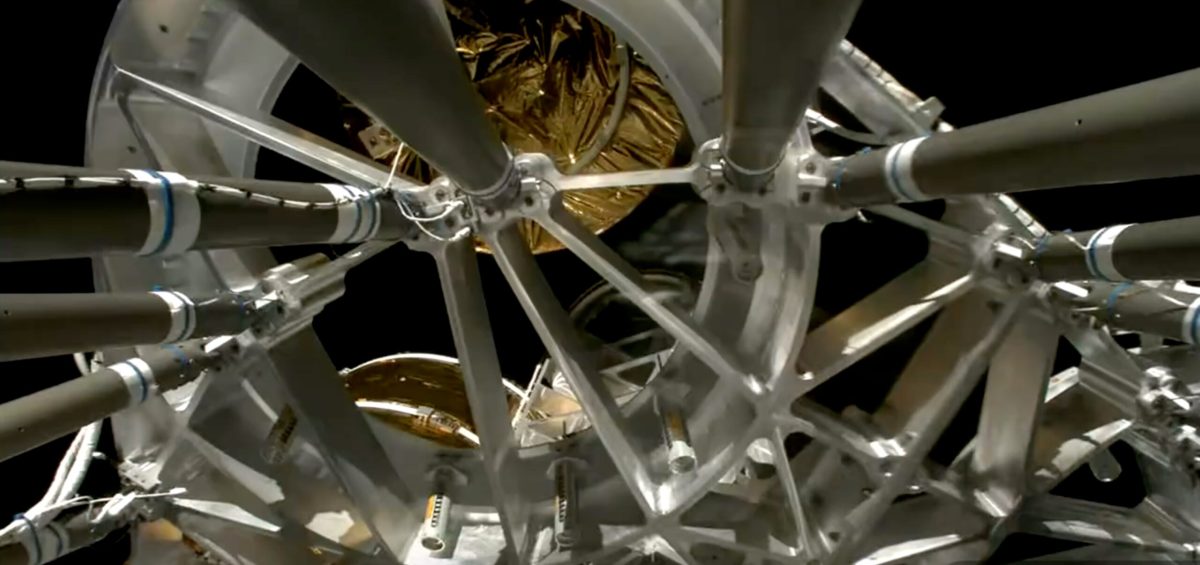TAMPA, Fla. — SpaceX launched the first five production satellites for AST SpaceMobile’s direct-to-smartphone broadband constellation Sept. 11.
A Falcon 9 carrying the Block 1 BlueBird spacecraft lifted off 4:52 a.m. Eastern from Cape Canaveral Space Force Station, Florida, and finished releasing all five satellites into low Earth orbit about 68 minutes later.
AST SpaceMobile founder, chair and CEO Abel Avellan said the operator established full contact with all five spacecraft post-launch.
We separated nominally and we are in full contact with all five vehicles. Congratulations to the team!! 🤠🚀🚀🚀🚀🚀🚀🚀🚀🚀🚀 https://t.co/LAr7vDfKHE
— Abel Avellan (@AbelAvellan) September 12, 2024
Five satellites would only be able to provide intermittent connectivity totaling less than an hour a day in the United States, AST SpaceMobile president and chief strategy officer Scott Wisniewski told SpaceNews in an interview, where the company plans initial services for mobile network partners seeking to extend their coverage beyond the reach of cell towers.
Still, Wisniewski said intermittent services would be useful for remote monitoring devices, emergency backups and beta tests with customers interested in full text, voice and data broadband services from space.
U.S. telcos AT&T and Verizon have invested in the Texas-based venture and plan to provide the wireless frequencies the constellation needs to reach standard smartphones already in circulation in the United States.
AST SpaceMobile also announced a revenue-generating government contract early this year using BlueWalker-3, AST SpaceMobile’s prototype satellite that SpaceX launched two years ago.
Wisniewski said two more government contracts are currently being contemplated.
Regulatory path
The U.S. Federal Communications Commission gave AST SpaceMobile conditional approval last month to operate its first five BlueBirds, but stopped short of allowing them to test services with wireless frequencies from AT&T and Verizon.
AST SpaceMobile also requires permission to provide commercial direct-to-smartphone services.
Wisniewski said the venture needs to resubmit regulatory filings to the FCC about its commercial service, and plans to avoid interfering with other networks, after Verizon joined AT&T as a partner and investor in the company.
He said AST SpaceMobile is in no rush to seek permission to test wireless frequencies from its recently launched BlueBirds as it completes in-orbit health checks and tests other systems on the satellites.
“When we want to start testing the wireless frequencies, which will be within the next three months, we’ll have either the commercial approval or we’ll file for a temporary” test license.
The FCC has many space applications to work through and tends to prioritize those approaching service, he said, adding that AST SpaceMobile has licenses to test wireless frequencies from the five BlueBirds in other countries it plans to deploy services.
The company has also successfully tested cellular frequencies from space with BlueWalker-3, which is roughly the same size as a Block 1 BlueBird with a solar array spanning 64 square meters — the largest commercial antenna deployed to LEO.
According to AST SpaceMobile, BlueWalker-3 has achieved more than 21 megabits per second (Mbps) download speeds during tests with standard smartphones.
In May, AST SpaceMobile moved the licensing administration for its constellation from Papua New Guinea to the United States after shifting its initial commercial focus to the country.
“We wouldn’t have done that if we didn’t feel good about approvals in the U.S.,” Wisniewski said.
Future service
Around 45-60 satellites would be enough to provide continuous services in the United States, at which point AT&T plans to roll out the capability to mobile customers.
“While testing will continue with each launch, we will only provide services to mobile customers when the full array is complete,” AT&T head of network Chris Sambar said via email.
“It is too early to give a specific date on when this service will become available,” he added, “but the Sept. 12 satellite launch is a major milestone toward making this vision a reality.”
Verizon did not reply to a request for comment.
Future satellites, which AST SpaceMobile builds in-house, would be more than three times bigger than those part of Block 1 and would span about 223 square meters in size, increasing their capacity and field of view.
AST SpaceMobile’s batch of five Block 1 BlueBird satellites awaiting launch on a SpaceX Falcon 9. Credit: AST SpaceMobileAST SpaceMobile recently said it had started producing parts for 17 follow-on BlueBirds after taking advantage of its soaring stock price to raise funds for the constellation.
“That’s a big chunk of the way to 45-60 but, as we continue to raise capital, we’re building as fast as we can,” Wisniewski said.
The company aims to build four to six satellites a month to expand the network.
“How that all jives to 45-60, we haven’t disclosed, but we’re gonna launch as many as we get in 2025 and go from there,” he added.
The sixth and follow-on Block 2 BlueBirds would have chips AST SpaceMobile is developing in-house that would enable 10 gigahertz of processing bandwidth per satellite, ten times the capacity of a Block 1 BlueBird and supporting 120 Mbps peak data rates.
Wisniewski said a Block 2 BlueBird is also designed to last seven to 10 years in orbit, compared with around five years for a Block 1 BlueBird.
He said AST SpaceMobile has been working to address concerns about the light pollution impact of its constellation on astronomical observations by using different materials and other technical solutions such as satellite tilting.
Meanwhile, AST SpaceMobile’s competitors are busy expanding constellations and working through regulatory approvals for rival mass-market, direct-to-smartphone services in the U.S. and elsewhere.
SpaceX has already launched more than 100 direct-to-smartphone satellites as part of its Starlink broadband constellation and aims to provide initial text services in the U.S. this year following successful tests.
T-Mobile, SpaceX’s direct-to-smartphone mobile network partner in the U.S., said Sept. 11 it had sent a wireless emergency alert via satellite for the first time in the country.
Lynk Global also recently revamped its leadership team amid efforts to raise the funds needed to expand its constellation globally.
